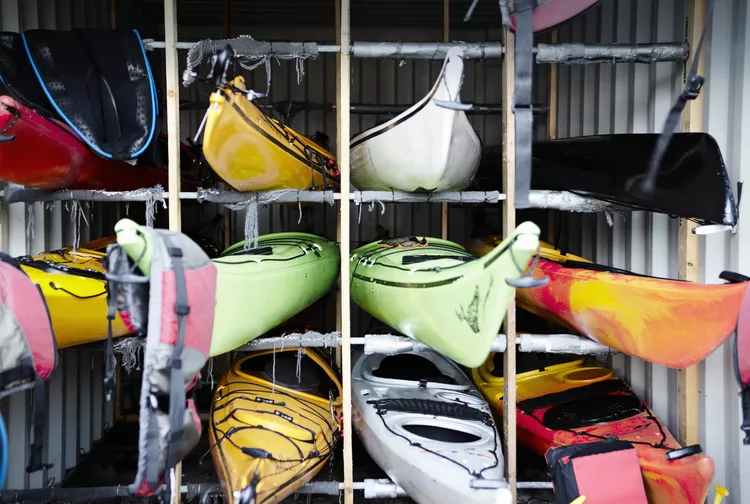Summary
Almost nobody really gives any thought to storing their plastic kayak when they set out to purchase one. That not-so-little detail usually gets left to happenstance after the fact. While that might be okay when we first buy the boat, over time it can lead to significant problems. No one wants their kayak in their living room, and simply placing it in a garage isn’t the best policy either.
Often upon returning from a kayaking trip, it is late, we’re exhausted, and our gear remains wet. It’s usually the night before a workday, and all we can manage to do is get the kayak off the roof of our car or out of the truck bed and toss it in the garage or backyard. Consequently, it becomes forgotten until the next adventure. While developing a long-term kayak storage strategy requires time and effort, there are some immediate actions to avoid when storing your kayak in the meantime.
Here’s a List of 5 “What Not to Dos” when it comes to Storing Your Kayak
Don’t Lay Your Kayak on a Hard Surface
- Plastic kayaks deform very easily. They can develop flat spots and dents where they contact the ground. You may notice these deformations after just a day or two.
Don’t Hang Your Kayak from the Grab Loops
- When a plastic kayak is hung from its grab loops, it tends to sag under its weight, creating a banana shape. Hanging the kayak using straps is advisable; however, avoid suspension from the grab loops.
Don’t Leave the Cockpit of Your Kayak Uncovered
- Whether stored indoors or outdoors, an open kayak invites various critters to make their home inside. Although you can wash out the kayak later, damage inflicted by these unwanted guests on the foam and rubber components can be irreparable. Furthermore, you may not discover a tiny passenger until it’s too late.
Don’t Leave Your Kayak Exposed to the Sun
- The sun is perhaps the most damaging element for plastic kayaks. UV rays fade and degrade the plastic, causing brittleness over time. Additionally, this exposure affects any rubber, foam, or plastic attachments on the kayak.
Don’t Leave Your Kayak Unlocked
- Given the rising popularity of kayaking, kayak theft has become a concern. Leaving your kayak unlocked in the same location repeatedly increases the risk of it being taken.
Of course, plastic is the most durable material for kayaks. During paddling or portaging, they often encounter rocks, leading to inevitable wear and tear. What you want to avoid, however, is damage from improper storage leading to deformation or brittleness of the hull. Moreover, an encounter with a red ant or spider inside the cockpit can be unsettling. Therefore, following these guidelines will help prolong the life of your plastic kayak and ensure that any damage occurs only during actual paddling adventures, rather than while seated in the garage.





